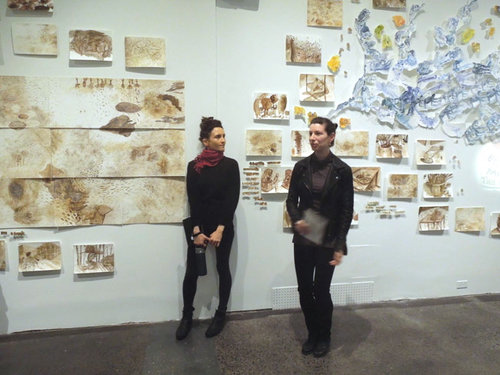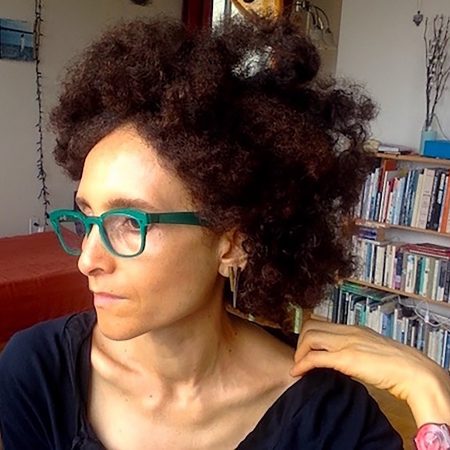Your recent body of work relates to loss, memory, love and respect. There are watercolor drawings, walls installations, and unobtrusive animations that you embed within your installations. Thinking of the content and form of Living Room for the Lost, can you tell me what it means to “animate”?
For me to animate means to scan, to show how the artist’s eyes move around an idea, to use movement as a way of showing contemplation from the artist’s perspective. I use animations to give a gentle push into a deeper place, and that is a place of contemplation and slowness.
Is there an element of play in your work, either in cultural persona, practice of presentation?
Yes, play is the part of the work that feels like my personal freedom. It allows me to not have to justify all of my actions and to feel like I own a space. For example, making an installation means responding to certain architectural boundaries and responding directly is a way of playing. The way I present each piece can be called otherworldly, surreal, or overwhelming. This choice of aesthetic presentation is also playful play and why drawing can also have a lightness to it as opposed to the serious vision that one can have of the introvert alone for long hours in their studio doing difficult work. Being outside of the cultural norm also encourages me to be playful, a direct metaphorical parallel of how I have to be in relation to culturally connecting with others.
For your two-person exhibition at Truck Gallery (2013), multifarious with artist Marigold Santos, you interviewed three women of Asian decent about what they felt Asian stereotypes should be in an ideal world, then you related those ideas with your perspective of what this so-called “utopian” world would look like. You question such potent emotions and personal experiences, often focusing on the forgotten, or the unjustly judged; would you consider your artwork to be political?
I don’t consider my work political but social. I am working with individuals and so there is always an intimacy involved and I feel like my work falls outside of other political work which can often be engaging larger communities or trying to address a grander concept that crosses borders, countries, etc. My artwork often feels like you’re sitting there with someone who’s laying everything out for you on their kitchen table.
Can you write about how you balance the representation of your personal history with your study of your empathy for others, such as in your 2002 Mount Saint Vincent Art Gallery, and first solo exhibition: Something to Carry?
Something to Carry is included in the work I’ve been making other individuals, which would mean so far I haven’t succeeded in being balanced at all! I suppose other’s stories become my own. It’s all been a carrying process since 2002.
Who are your artistic influences, either in art, literature, or critical discourse?
I tend to like a specific piece from an artist, one book that a writer wrote, or a paragraph from an essay that really resonates with me, similar to when people listened to entire albums, rarely was the whole album good but when it was, it was! Over all I appreciate the drawings of daily life from Indigenous artists from up North, and spend a lot of time listening to writers Junot Diaz or Toni Morrison speak about writing, life, and politics. Some other specific influences who come to mind off the top of my head are Allison Hrabluik’s recent animations, Bovey Lee’s “Fighting/Touching” cut leather wall installation from 2014, Harrell Fletcher’s essay called: Some Thoughts on Art and Education from 2007, and the video work A Handy Tip for the Easily Distracted by Miranda July.
What’s next?
Over the last year, I’ve been working on narrative writing and performative elements of my work. I’ve begun to perform them, myself or with others, as a visual piece as opposed to drawings. I have to stop drawing because I’ve messed up both of my wrists from overdrawing and overtyping.
Lucie Chan
Pop-up Artist 2015

